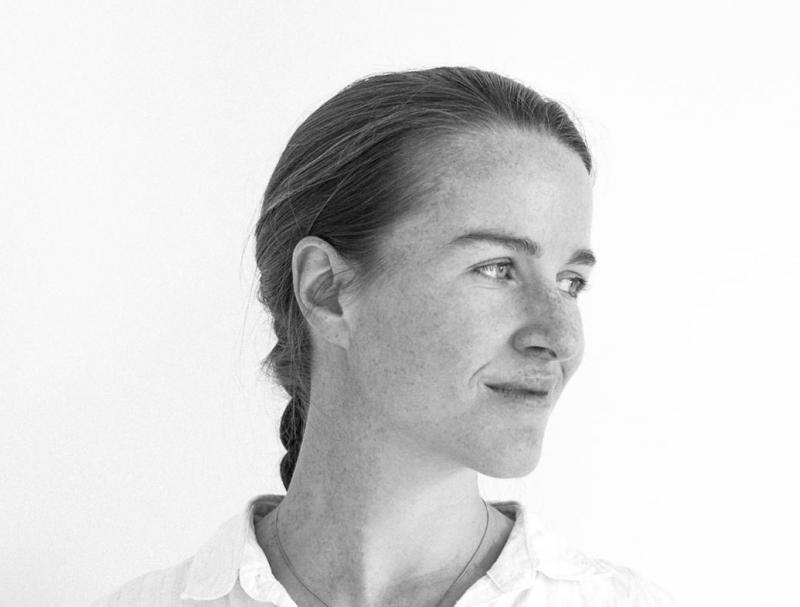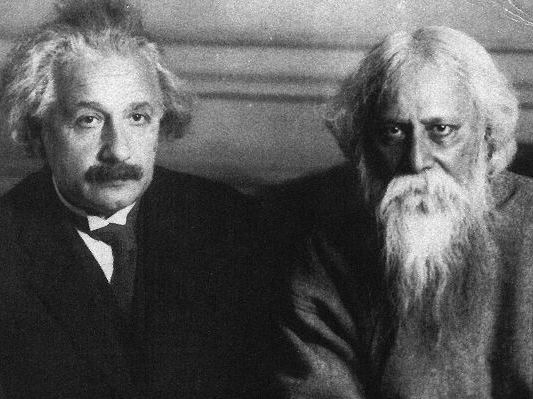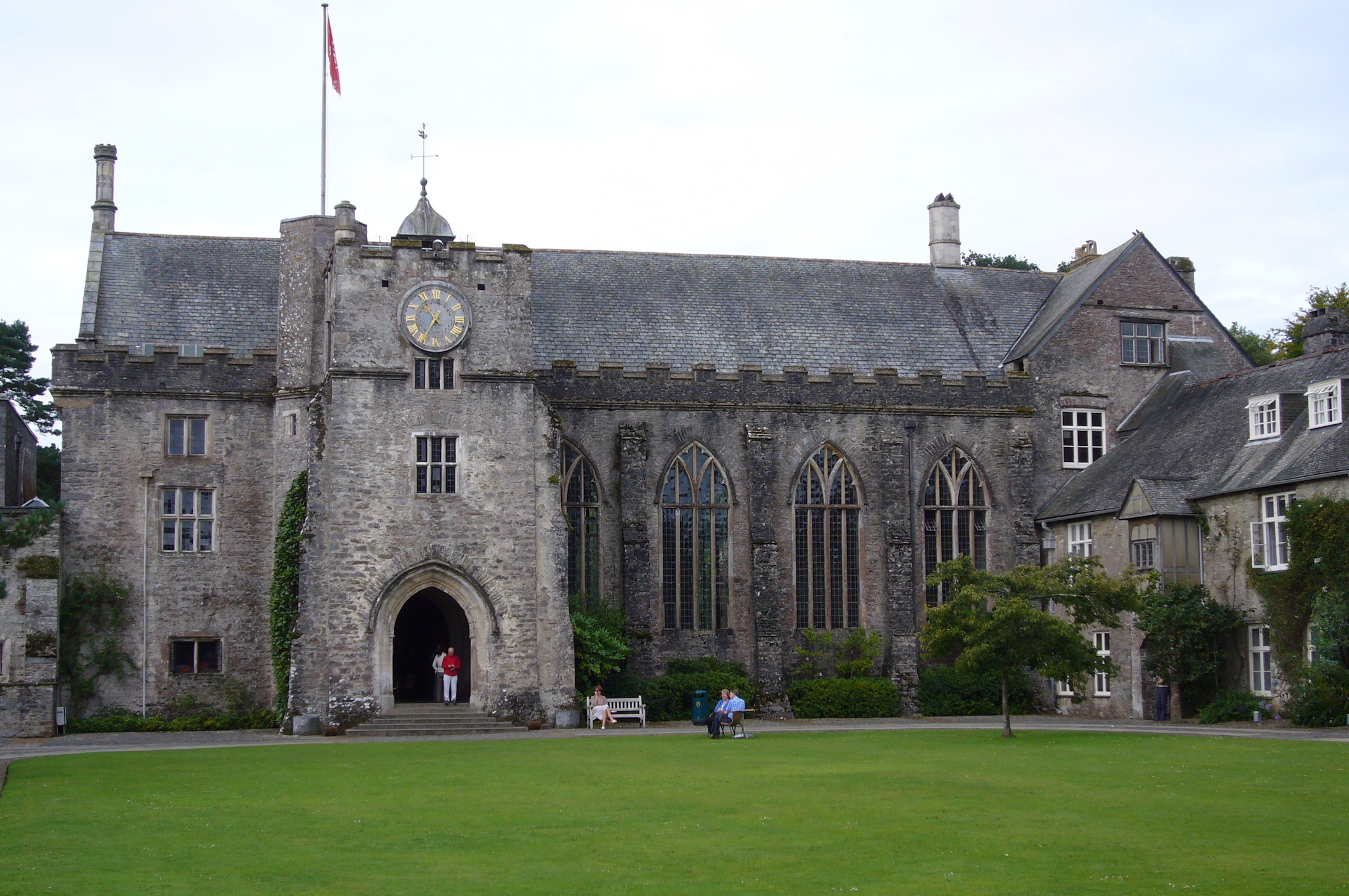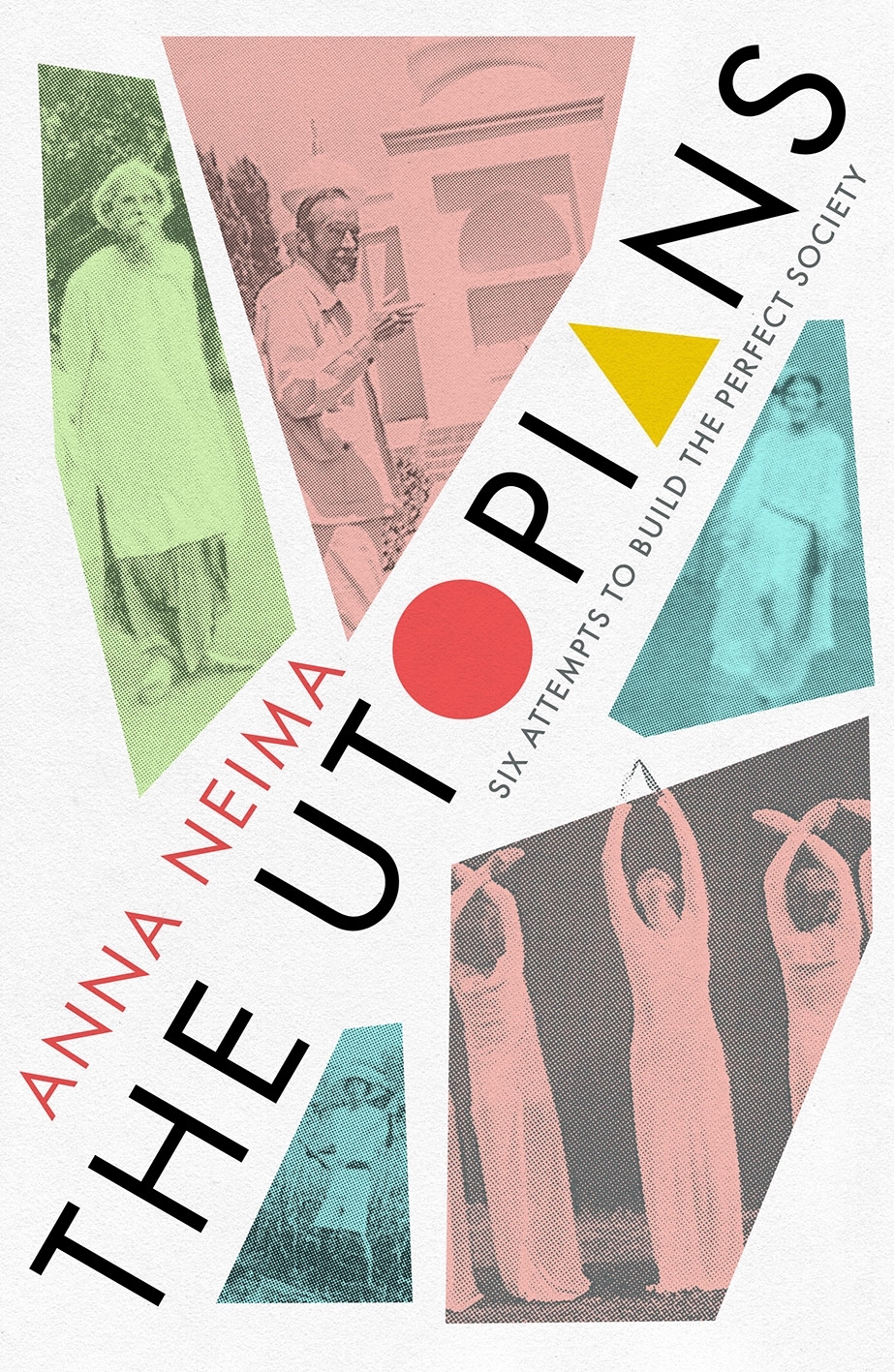Anna Neima: The Utopians review – after horror, six quests for the good life | reviews, news & interviews
Anna Neima: The Utopians review – after horror, six quests for the good life
Anna Neima: The Utopians review – after horror, six quests for the good life
A timely exploration of post-Great War bids to build heaven on earth

Not long after the Nazis came to power, Eberhard Arnold sent a manifesto to Adolf Hitler. The Protestant preacher urged the dictator to “embrace universal love”. With his wife Emmy, Eberhard had founded a radical, egalitarian Christian community in the mountains of central Germany. Now the SS and Gestapo had begun to harass them. Unsurprisingly, the Führer was unmoved.
Utopian ventures have spawned an extensive literature but historian Anna Neima has picked a valuable and illuminating focus for her first book. The Utopians selects six examples of “social dreaming” established in the aftermath of the First World War, with its “dizzying sense of an entire social order destroyed”. In their different fashions, all her communities aimed to snatch “paradise out of the jaws of hell”. They sought to replace materialism, competition and conflict with an exemplary way of life rooted in “shared property, democratic decision-making and progressive education”. You expect, and indeed find, many episodes of splits and factions, of breakdowns in trust and finance, of “bitter squabbles” over rule-making, fund-raising, child-rearing and “whose turn it was to feed the pigs”. All that happens – sometimes tragically, more often comically. Yet the overwhelming impression left by The Utopians is that these quixotic enterprises often succeeded beyond their makers’ fondest dreams: not in turning a profit, or even keeping their members harmoniously in step, but in seeding ideas and aspirations that later spread through a much broader landscape. From “the business methods of Silicon Valley” to the norms of community development projects; from New Age self-help psychology to the cell structure of Alcoholics Anonymous and similar groups: the “openings in the fabric of society” made by Neima’s Utopians have grown ever wider over time.
 She begins in the colonial India of 1921, at the educational and agricultural communities planted in Bengal by the polymathic sage Rabindranath Tagore. Santiniketan hosted schools and a university while Sriniketan fostered “rural regeneration” via experimental, co-operative farms and the revival of local crafts. The Nobel Prize-winning Tagore [pictured above with Albert Einstein in Berlin, 1930] already toured the world and magnetised disciples as an intellectual superstar and icon of anti-colonial thought. His shift to “practical utopianism” reflected the urge to ground ideals in action that echoes through this book. The “red clay campus” at Santiniketan soon exerted its “free, creative, cosmopolitan allure”; later students included director Satyajit Ray and economist-philosopher Amartya Sen. There and at Sriniketan, Tagore’s “inherited sense of privilege” chafed against inclusive, democratic principles: a perennial tension in egalitarian communities that depend on the drive, contacts and (of course) the cash of dynamic sponsors. On balance, the revitalised village life of Sriniketan worked better, down to the provision of latrines as a means to promote “sanitation, social unity and soil fertility” (the success or failure of Utopia can turn on “good lavatorial arrangements”). Its farming breakthroughs owed much to Tagore’s Yorkshire-born sidekick Leonard Elmhirst, a far-sighted agricultural economist who soon went on to write his own, crucial chapter in the story of the post-Great War utopias.
She begins in the colonial India of 1921, at the educational and agricultural communities planted in Bengal by the polymathic sage Rabindranath Tagore. Santiniketan hosted schools and a university while Sriniketan fostered “rural regeneration” via experimental, co-operative farms and the revival of local crafts. The Nobel Prize-winning Tagore [pictured above with Albert Einstein in Berlin, 1930] already toured the world and magnetised disciples as an intellectual superstar and icon of anti-colonial thought. His shift to “practical utopianism” reflected the urge to ground ideals in action that echoes through this book. The “red clay campus” at Santiniketan soon exerted its “free, creative, cosmopolitan allure”; later students included director Satyajit Ray and economist-philosopher Amartya Sen. There and at Sriniketan, Tagore’s “inherited sense of privilege” chafed against inclusive, democratic principles: a perennial tension in egalitarian communities that depend on the drive, contacts and (of course) the cash of dynamic sponsors. On balance, the revitalised village life of Sriniketan worked better, down to the provision of latrines as a means to promote “sanitation, social unity and soil fertility” (the success or failure of Utopia can turn on “good lavatorial arrangements”). Its farming breakthroughs owed much to Tagore’s Yorkshire-born sidekick Leonard Elmhirst, a far-sighted agricultural economist who soon went on to write his own, crucial chapter in the story of the post-Great War utopias.
At Dartington, Tagore's Bengal came to deepest Devon. Thanks to the inherited fortune of Elmhirst’s American wife Dorothy – whose Whitney family money also nurtured the New Republic magazine and New York’s New School for Social Research – this run-down estate around a ruined medieval hall become a British focus for interwar social and artistic innovation. Not every Tagorean ideal flourished there. Estate workers mistrusted the fancy pretensions of the toffs. Workplace democracy rang hollow when “a single night of ballet” (staff attendance expected) might eat up the cost someone’s annual wage. And the Elmhirsts themselves never quite knew whether to act as squires or chums. For all the setbacks, though, Dartington – as model farm, crafts studio, arts centre, child-centred school, and through other offshoots – became a beacon of reform. After the Second World War, it contributed mightily to “shaping the mainstream” of progressive welfare-state culture.
 The Dartington Trust still thrives, 95 years after Elmhirst came across the dilapidated hall [pictured above today]. Much less remains of the Atarashiki Mura (“New Village”) that the writer-activist Mushanokōji Saneatsu set up in Japan in 1918. In flight from his nation’s cult of duty and “extreme social obedience”, and formerly an individualist dandy who led Tokyo’s literary avant-garde, Mushanokōji pivoted towards collective action after Japanese social upheavals in the 1910s. He drew followers to distant Hyūga, in Japan’s deep south, where wholesome toil on the land and an eclectic philosophy drawn not just from Tagore but Jesus, Buddha, Tolstoy and William Morris would model a “new world order”. The village aspired to make life “equal and fulfilling for all”. Like Neima’s other utopias, it sought to join “head, hand and heart” in an integrated, holistic union of principle and practice; and, like them, it became the target of criticism not just from suspicious conservatives but socialists for whom the retreat of little bands of seekers to faraway communes smacked of “bourgeois privilege and ivory towers”.
The Dartington Trust still thrives, 95 years after Elmhirst came across the dilapidated hall [pictured above today]. Much less remains of the Atarashiki Mura (“New Village”) that the writer-activist Mushanokōji Saneatsu set up in Japan in 1918. In flight from his nation’s cult of duty and “extreme social obedience”, and formerly an individualist dandy who led Tokyo’s literary avant-garde, Mushanokōji pivoted towards collective action after Japanese social upheavals in the 1910s. He drew followers to distant Hyūga, in Japan’s deep south, where wholesome toil on the land and an eclectic philosophy drawn not just from Tagore but Jesus, Buddha, Tolstoy and William Morris would model a “new world order”. The village aspired to make life “equal and fulfilling for all”. Like Neima’s other utopias, it sought to join “head, hand and heart” in an integrated, holistic union of principle and practice; and, like them, it became the target of criticism not just from suspicious conservatives but socialists for whom the retreat of little bands of seekers to faraway communes smacked of “bourgeois privilege and ivory towers”.
Unlike Neima’s other subjects, who stuck to their pacifist guns (or rather hoes), Mushanokōji collapsed back into “militant patriotism” during Japan’s war-mongering 1930s. Before that, he had mistrusted the cult of personality even while – as with Tagore – his role as champion and pioneer encouraged him to embody it. The Greek-Armenian visionary George Georgiadis, who called himself GI Gurdjieff, had no such qualms. In contrast to the authentic, if stumbling, selflessness of Neima’s other seers, a strong whiff of charlatanism has always attached to Gurdjieff. The Utopians never downplays the elements of venality, cultishness and sheer absurdity around the “Institute for the Harmonious Development of Man” he built up in a former priory outside Paris. Gurdjieff may have spellbound the literary Europe (and US) of the early 1920s as he synthesised disparate belief-systems into his mystical “Fourth Way”. He was also a vainglorious trickster who motored erratically around Fontainebleu like an occult Mr Toad and told passengers that you could “escape from the mechanical laws of accident by developing your inner will”. Yet his appeal was mesmeric, and his acolytes distinguished. Katherine Mansfield spent her last months at the Institute and felt that, among Gurdjieff and his followers, she had found “my own people at last”.
 Gurdjieff cultivated the charismatic “ideal of redemption by a single ‘great man’ or ‘master’”. In Germany, the Arnolds and their Bruderhof companions shunned the guru model. Instead they valued honest toil, fellowship and equality rooted in their conception of primitive Christianity. The Bruderhof communities welcomed visitors of all faiths; they emerge in Neima’s book as the most purest, most resilient of her “intentional communities”. Their “absolute belief in universal brotherhood" endured, though not without threats – first from the Nazis, then from the more authoritarian US Hutterites with whom they allied. The Bruderhof flame still quietly burns. Yet the most widespread, if fuzziest, legacy left by Neima’s half-dozen models of social dreaming arguably came from Gerald Heard and his Trabuco College near Los Angeles. By the time he established Trabuco in 1942, the Anglo-Irish Heard – a prolific, scattergun writer, thinker, talker and broadcaster – had run the gamut of inter-war fads, cults and trends (he even wrote a book about flying saucers). Trabuco incubated a Californian mishmash of esoteric thought, communal living and self-actualisation in search of a state of “superconsciousness”. The ideas that drove Heard’s “neo-Brahmins” in their canyon sound like a sprawling mess, and Neima reports that the college came to feel like “a random, disorganised gathering of individuals”. Look at almost any New Age or counter-culture fashion of the past decades, though, and you might conclude that it germinated at Trabuco.
Gurdjieff cultivated the charismatic “ideal of redemption by a single ‘great man’ or ‘master’”. In Germany, the Arnolds and their Bruderhof companions shunned the guru model. Instead they valued honest toil, fellowship and equality rooted in their conception of primitive Christianity. The Bruderhof communities welcomed visitors of all faiths; they emerge in Neima’s book as the most purest, most resilient of her “intentional communities”. Their “absolute belief in universal brotherhood" endured, though not without threats – first from the Nazis, then from the more authoritarian US Hutterites with whom they allied. The Bruderhof flame still quietly burns. Yet the most widespread, if fuzziest, legacy left by Neima’s half-dozen models of social dreaming arguably came from Gerald Heard and his Trabuco College near Los Angeles. By the time he established Trabuco in 1942, the Anglo-Irish Heard – a prolific, scattergun writer, thinker, talker and broadcaster – had run the gamut of inter-war fads, cults and trends (he even wrote a book about flying saucers). Trabuco incubated a Californian mishmash of esoteric thought, communal living and self-actualisation in search of a state of “superconsciousness”. The ideas that drove Heard’s “neo-Brahmins” in their canyon sound like a sprawling mess, and Neima reports that the college came to feel like “a random, disorganised gathering of individuals”. Look at almost any New Age or counter-culture fashion of the past decades, though, and you might conclude that it germinated at Trabuco.
The Utopians uncovers stories of folly and delusion, but of wisdom and courage in abundance too. Neima concentrates on the upward, not downward, slopes of her communities’ evolution. It’s rare to wish book longer but I would have enjoyed more on later mutations, for instance at Santiniketan and Dartington, as they adapted to survive. But the questions she raises – of theory and practice in communal living, non-authoritarian leadership, everyday democracy and succession-planning – apply now, as they did in the 1920s, to any enterprise that tries to grow the seeds of hope in “an age teeming with dystopian fears”. After the pandemic, our own age faces a fresh crop of fears. Engagingly written with colour, warmth and unobtrusive erudition, The Utopians looks back to find some sturdy roots of hope.
- The Utopians: Six Attempts to Build the Perfect Society by Anna Neima (Picador, £25)
- More book reviews on theartsdesk
rating
Explore topics
Share this article
The future of Arts Journalism
You can stop theartsdesk.com closing!
We urgently need financing to survive. Our fundraising drive has thus far raised £49,000 but we need to reach £100,000 or we will be forced to close. Please contribute here: https://gofund.me/c3f6033d
And if you can forward this information to anyone who might assist, we’d be grateful.

Subscribe to theartsdesk.com
Thank you for continuing to read our work on theartsdesk.com. For unlimited access to every article in its entirety, including our archive of more than 15,000 pieces, we're asking for £5 per month or £40 per year. We feel it's a very good deal, and hope you do too.
To take a subscription now simply click here.
And if you're looking for that extra gift for a friend or family member, why not treat them to a theartsdesk.com gift subscription?
more Books
 'We are bowled over!' Thank you for your messages of love and support
Much-appreciated words of commendation from readers and the cultural community
'We are bowled over!' Thank you for your messages of love and support
Much-appreciated words of commendation from readers and the cultural community
 Robin Holloway: Music's Odyssey review - lessons in composition
Broad and idiosyncratic survey of classical music is insightful but slightly indigestible
Robin Holloway: Music's Odyssey review - lessons in composition
Broad and idiosyncratic survey of classical music is insightful but slightly indigestible
 Thomas Pynchon - Shadow Ticket review - pulp diction
Thomas Pynchon's latest (and possibly last) book is fun - for a while
Thomas Pynchon - Shadow Ticket review - pulp diction
Thomas Pynchon's latest (and possibly last) book is fun - for a while
 Justin Lewis: Into the Groove review - fun and fact-filled trip through Eighties pop
Month by month journey through a decade gives insights into ordinary people’s lives
Justin Lewis: Into the Groove review - fun and fact-filled trip through Eighties pop
Month by month journey through a decade gives insights into ordinary people’s lives
 Joanna Pocock: Greyhound review - on the road again
A writer retraces her steps to furrow a deeper path through modern America
Joanna Pocock: Greyhound review - on the road again
A writer retraces her steps to furrow a deeper path through modern America
 Mark Hussey: Mrs Dalloway - Biography of a Novel review - echoes across crises
On the centenary of the work's publication an insightful book shows its prescience
Mark Hussey: Mrs Dalloway - Biography of a Novel review - echoes across crises
On the centenary of the work's publication an insightful book shows its prescience
 Frances Wilson: Electric Spark - The Enigma of Muriel Spark review - the matter of fact
Frances Wilson employs her full artistic power to keep pace with Spark’s fantastic and fugitive life
Frances Wilson: Electric Spark - The Enigma of Muriel Spark review - the matter of fact
Frances Wilson employs her full artistic power to keep pace with Spark’s fantastic and fugitive life
 Elizabeth Alker: Everything We Do is Music review - Prokofiev goes pop
A compelling journey into a surprising musical kinship
Elizabeth Alker: Everything We Do is Music review - Prokofiev goes pop
A compelling journey into a surprising musical kinship
 Natalia Ginzburg: The City and the House review - a dying art
Dick Davis renders this analogue love-letter in polyphonic English
Natalia Ginzburg: The City and the House review - a dying art
Dick Davis renders this analogue love-letter in polyphonic English
 Tom Raworth: Cancer review - truthfulness
A 'lost' book reconfirms Raworth’s legacy as one of the great lyric poets
Tom Raworth: Cancer review - truthfulness
A 'lost' book reconfirms Raworth’s legacy as one of the great lyric poets
 Ian Leslie: John and Paul - A Love Story in Songs review - help!
Ian Leslie loses himself in amateur psychology, and fatally misreads The Beatles
Ian Leslie: John and Paul - A Love Story in Songs review - help!
Ian Leslie loses himself in amateur psychology, and fatally misreads The Beatles
 Samuel Arbesman: The Magic of Code review - the spark ages
A wide-eyed take on our digital world can’t quite dispel the dangers
Samuel Arbesman: The Magic of Code review - the spark ages
A wide-eyed take on our digital world can’t quite dispel the dangers

Add comment